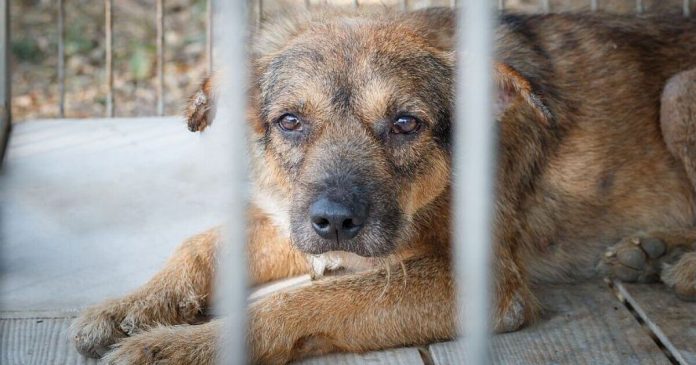This article is written by Anushka Singhal from Symbiosis Law School, NOIDA. This article sheds light on Section 11 of the Prevention of Cruelty to Animals Act, 1960, and the changes needed therein.
It has been published by Rachit Garg.
Table of Contents
Introduction
Both animals and humans inhabit this planet. As the most intelligent living beings on this planet, it becomes our responsibility to conserve the other species existing on it, animals being one of them. In N.R. Nair v. UOI, 2001, the Kerala High Court emphasised that welfare of animals should be considered of paramount importance. Thus, to prevent and punish cruelty against animals, the Prevention of Cruelty to Animals Act was enacted by the legislature in 1960. Section 11 is one of the essential sections of this act. It lists down the acts which would be considered cruelty to animals and also mentions the punishment for the same. But the recent incidents have brought to light the inadequacy of this section to curb cruelty against animals. In November 2022, a group of students killed a pregnant dog by beating it. This act of beating was a horrific act that garnered hate from all across the country. People demanded strict action against these students who committed such an inhumane act. But to our astonishment, these boys could only be subjected to a fine of Rs. 10-50 as per Section 11 of the Prevention of Cruelty to Animals Act, 1960. This article delves deeper into this Section, brings out its inadequacy, and recommends reforms to be conducted.
The objective of the statute
The Prevention of Cruelty to Animals Act of 1960 was enacted to curb the infliction of suffering and unnecessary pain on animals. Mahatma Gandhi once said, “the greatness of a nation is judged by the way it treats its animals.” Currently, animals are employed in a wide variety of economic activities, like carrying goods, conducting research, making products, etc. We, humans, can take whatever work they want from these animals, as they are mute spectators who cannot resist us. So to stop the unnecessary cruelty inflicted upon animals, this legislation came into force. This statute provides for creating an animal welfare board in the country to prevent cruelty against animals. Currently, there is no international treaty on the welfare of animals, but different countries have their own laws, the Indian Prevention of Cruelty to Animals Act 1960 being one of them.
Section 11: what does it entail
Section 11 of the Prevention of Cruelty to Animals Act, 1960, defines what entails cruelty to animals and prescribes punishment for the same. Following are the acts which constitute cruelty against animals-
- Whoever beats, tortures, overdrives, kicks, or overburdens an animal and causes pain and suffering to him, either being the owner or not.
- Employs any unfit animal to be used or permits the employment of such unfit animal. The animal is considered to be inappropriate if it is old, infirm, injured etc.
- Administers or permits the administration of any harmful drug to such animals.
- Conveys the animal in a vehicle or otherwise in a manner to inflict unnecessary suffering or pain upon him.
- Keeps the animal enclosed in an area insufficient for him.
- Keeps an animal chained unnecessarily and heavily.
- Being an owner neglects to exercise the dog who is chained or confined.
- Does not provide sufficient food or water to the animal
- Abandons any animal to make him suffer
- Being an owner abandons an ill animal on the streets
- Offers for sale an injured or sick animal
- Mutilate any animal
- Confine an animal for the purpose of entertainment in which they make the animals fight with each other or make one the prey of other
- Make animals take part in shooting competitions and captivate them for the same.
Any person who commits any of the following acts of cruelty for the first time will be punished with a fine of Rs. 10-50. In the case of a second or subsequent offence committed within three years of the previous offence, with a fine which shall not be less than twenty-five rupees but which may extend to one hundred rupees or with imprisonment for a term which may extend to three months, or with both. Certain activities mentioned in this Section are not included within the ambit of cruelty; these are considered to be for the benefit of the animals and society itself and are thus, excluded. The offences mentioned in this Section are classified into cognizable and non-cognizable offences. The acts of mutilating and confining animals for entertainment or competition purposes are cognisable offences as per Section 31 of the PCA.
Important judgments
This Section was interpreted in the case of Bali Parida v. Nira Parida, 1969, wherein the Odisha High Court held that beating under Section 11 is not punishable unless it causes unnecessary pain and suffering to the animal. That means if I beat a dog to shoo it away, then it would not be considered beating, as per this Section.
The landmark judgment of Animal Welfare Board of India v. A. Nagaraja, 2014, explains Section 11 and the whole statute effectively. In this case, the Hon’ble Supreme Court allowed the killing of irretrievably ill or mortally wounded stray dogs and also explained the concept of unnecessary pain as mentioned under Section 11. If the suffering caused to the animal is for its own benefit, for human benefit or for the use of the property, then the same should not be made punishable. In this case, the jallikattu sport was banned as the Court held that the sport violated Section 3, Section 11(1)(a), Section 11(1)(m), Section11(1)(n), and Section 22 of the PCA (which relate to competitions or matches between animals wherein animals are made to fight or perform).
Moreover, the act of rubbing some solution into the eyes of the bulls during the sport was found to be a violation of Section 11(c), i.e., administering drugs to animals. Keeping the bulls confined in cages was found to be a violation of Section 11(f).
The ruling in Compassion Unlimited Plus Action v. Union of India, 2016, also made clear that any unnecessary pain or suffering inflicted upon an animal would come under the ambit of Section 11. Several writ petitions under Article 32 were filed against the notification published by the Union of India on January 7, 2016, specifying bears, monkeys, tigers, panthers, lions, and bulls as not to be exhibited or trained as performing animals. Usually, we observe that animals are often ruthlessly transported in trucks. They are stuffed like toys inside these trucks, which are not even the proper size for these animals. Such acts were found to be an infliction of cruelty upon animals under Section 11(1)(e) of the PCA by the Maharashtra High Court in the case of Krushi Goseva Sangh v. State of Maharashtra, 1987, and by the Supreme Court in Bharat Amratlal Kothari v. Dosukhan Samadkhan Sindhi, 2009.
Need for an amendment
There are two fundamental problems associated with Section 11 of the PCA. Firstly, the punishments provided need to be revised; secondly, they need to be more varied. The penalties provided under Section 11 may have been adequate in the 1960s, but now these punishments need to be revised. Also, Section 11, read with Section 31, classifies the offences mentioned under Section 11 into cognisable and non-cognizable. Still, to our astonishment, despite the varying gravity of the offences, the punishment prescribed is the same. The Hon’ble Supreme Court observed the inadequacy of the penalty in Animal Welfare Board of India v. A. Nagaraja; they advised the government to amend this Section to match the society’s current needs. One more flaw that can be associated with this Section is that it excludes several other activities that can come under the ambit of animal cruelty. Our courts have often discussed animal welfare, and the need for amendment has often been cited. In People’s Charioteer Organization v. UOI & Anrs. 2020, the Hon’ble Supreme Court talked about making stringent animal welfare laws and pointed towards the 2016 amendment bill.
Proposed amendments
A draft bill called the Draft Animal Welfare Act, 2011 was the first proposed amendment that sought to replace the Prevention of Cruelty to Animals Act of 1960. An amendment to the act has been prescribed by the 2016 amendment bill, wherein for the first offence, a fine of not less than three thousand rupees but which may extend to five thousand rupees has been prescribed. In the case of a second or subsequent offence committed within three years of the previous offence, a fine of not less than five thousand rupees but which may extend to ten thousand rupees, or with imprisonment for a term which may extend to six months, or with both was prescribed. A proposed amendment to the bill is the 2021 amendment laid in the form of a private member bill by Mr Anubhav Mohanty, Member of Parliament in the Lok Sabha. At the same time, the recently proposed amendment is by the Ministry of Fisheries, Animal Husbandry and Dairying. The draft 2022 bill has introduced gruesome cruelty as a new category of cruelty under this Section. A minimum fine of Rs. 50,000, and a maximum penalty of Rs. 75,000 has been proposed for gruesome cruelty. Now a strict punishment of five years has been proposed for killing an animal. This draft proposes 61 changes to the Act. If passed, this amendment would help make good animal welfare legislation.
Conclusion
Cruelty to animals is a sin and should be punished adequately. The current safeguards against cruelty to animals are not enough, and there is a need for reform. The Supreme Court, in the famous jalikattu case, has placed the right to life of animals under Article 21 of the Indian Constitution. Moreover, Article 51-A (g) is a fundamental duty cast upon all of us, which talks about protecting wildlife and the environment. Even if we talk about ancient times, we have always worshipped animals. Therefore, any cruelty against them has to be taken seriously. No doubt, we have Section 11 of the PCA, but the provisions under it need to be revisited, and amendments need to be enforced.
Frequently Asked Questions (FAQs)
What is Section 11 of the Prevention of Cruelty to Animals Act, 1960?
Section 11 of the PCA defines which acts are to be considered cruelty to animals and also prescribes punishment for the same.
What are the minimum and maximum punishments prescribed under this section?
The minimum punishment is a fine of Rs. 10, and for a subsequent cruel act within three years, the punishment can extend up to a fine of Rs. 100 or imprisonment of three months, or both
Cognisable and non-cognizable offences are mentioned under which section in the PCA Act?
Section 31 of the PCA classifies the act as cognisable and non-cognizable offences.it has to be read together with Section 11 of the act.
References
- https://nualslawjournal.com/2022/01/28/the-poisoned-arrow-of-section-11-prevention-of-cruelty-to-animals-act-1960-and-the-proposed-amendment/
- https://papers.ssrn.com/sol3/papers.cfm?abstract_id=3637287
- http://nujslawreview.org/2017/08/16/broadening-the-scope-of-liabilities-for-cruelty-against-animals-gauging-the-legal-adequacy-of-penal-sanctions-imposed/
- https://indraprasthalawreview.in/wp-content/uploads/2020/10/ggsipu_uslls_ILR_2020_V1-I1-15-kushal_choudhary-ayushi_sinha.pdf
Students of Lawsikho courses regularly produce writing assignments and work on practical exercises as a part of their coursework and develop themselves in real-life practical skills.
LawSikho has created a telegram group for exchanging legal knowledge, referrals, and various opportunities. You can click on this link and join:
Follow us on Instagram and subscribe to our YouTube channel for more amazing legal content.
 Serato DJ Crack 2025Serato DJ PRO Crack
Serato DJ Crack 2025Serato DJ PRO Crack











 Allow notifications
Allow notifications



